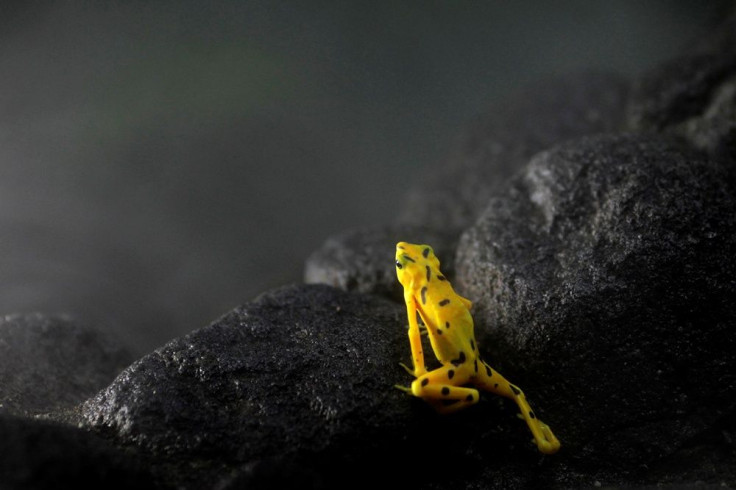New Species Of Mini, Bright-Coloured Frogs Discovered In Brazilian Forests

Scientists have discovered new species of frogs in a remote Brazilian forest. Now, seven species have been added to the 21 known species of Brachycephalus, National Geographic News reports.
The genus Brachycephalus is composed of tiny, bright-coloured frogs. These frogs are considered the smallest in size among terrestrial vertebrates according to NatGeo. Some of these species are measured to be only a centimetre long.
The seven new species were discovered by Marco Pie, a professor in Brazil’s Universidade Federal do Paraná, and his team. Researchers think that the bright colours of the frogs serve as a warning for predators that they are not healthy meals. The species are usually seen active during the day and mostly bury themselves under dead leaves.
Pie thought that the habitat of these frogs, the mountainous areas in Brazil’s Atlantic forest, is inaccessible and only means that there are more species yet to be discovered. So he and his team set out on an expedition to southern Brazilian cloud forests in Parana and Santa Catarina to search for new species.
The first species of Brachycephalus frogs was discovered in 1824, according to the LA Times. Other members of the species were discovered for the past 15 years and this is because scientists find it hard to reach the remote sites.
Researchers say that the frogs are vulnerable to extinction because they are limited to cloud forests, which are sensitive to the effects of climate change. Furthermore, the forests are also threatened by deforestation and cattle ranching.
Not much is known about the recently discovered mini frogs, but Pie and the team feels concerned about their future. “Preserving these areas is crucial not only for conservation, but also to understand how such high levels of biodiversity were generated in the first place," he said.
Sources say that Pie and his research team are currently collaborating with environmental protection agencies to propose the development of reserves in the region. The discovery report can be found in PeerJ.
To report problems or leave feedback on this article, email: wendylemeric@gmail.com.




















